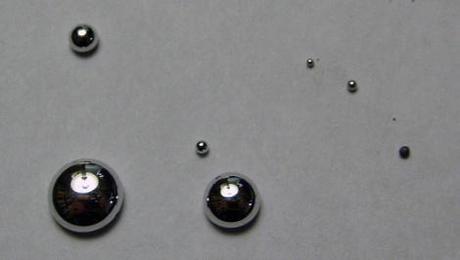We know that life is carbon-based, but what if a living thing could be made from another element? Interesting question, hm?Lee Cronin of the University of Glasgow may have done something incredible… He has created lifelike cells from metal.But this is not all. It gets even more crazier. Cronin has hinted that the metal-based cells may be replicating themselves and evolving.New Scientist reports that, this discovery opens the door to the possibility that there may be life forms in the universe not based on carbon.

“I am 100 percent positive that we can get evolution to work outside organic biology,” he said.The high-functioning “cells” that Cronin has built are constructed from large polyoxometalates derived from a range of metal atoms, like tungsten. He gets them to assemble in bubbly spheres by mixing them in a specialized saline solution, and calls the resultant cell-like structures “inorganic chemical cells,” or iCHELLs.The metallic bubbles are certainly cell-like, but are they actually alive? Cronin has made a compelling case for the comparison by constructing the iCHELLS with a number of features that make them function much as real cells do. For instance, by modifying the outer oxide structure of the bubbles so that they are porous, he has essentially built iCHELLs with membranes capable of selectively allowing chemicals in and out according to size, much as what happens with the walls of real cells.Cronin’s team has also created bubbles inside of bubbles, which opens the door to the possibility of developing specialized “organelles.” Even more compelling, some of the iCHELLs are being equipped with the ability to photosynthesize. The process is still rudimentary, but by linking some oxide molecules to light sensitive dyes, the team has constructed a membrane that splits water into hydrogen ions, electrons and oxygen when illuminated — which is how photosynthesis begins in real cells.Of course, the most compelling lifelike quality of the iCHELLs so far is their ability to evolve. Although they aren’t equipped with anything remotely resembling DNA, and therefore can’t replicate themselves in the same way that real cells do, Cronin has nevertheless managed to create some polyoxometalates that can use each other as templates to self-replicate. Furthermore, he is currently embarked on a seven-month experiment to see if iCHELLs placed in different environments will evolve.The early results have been encouraging.
“I think we have just shown the first droplets that can evolve,” Cronin hinted.These findings could forever change how life is defined. It also greatly improves the odds of life existing elsewhere in the universe, since life forms could potentially be built from any number of different elements.N.Via: MNN

